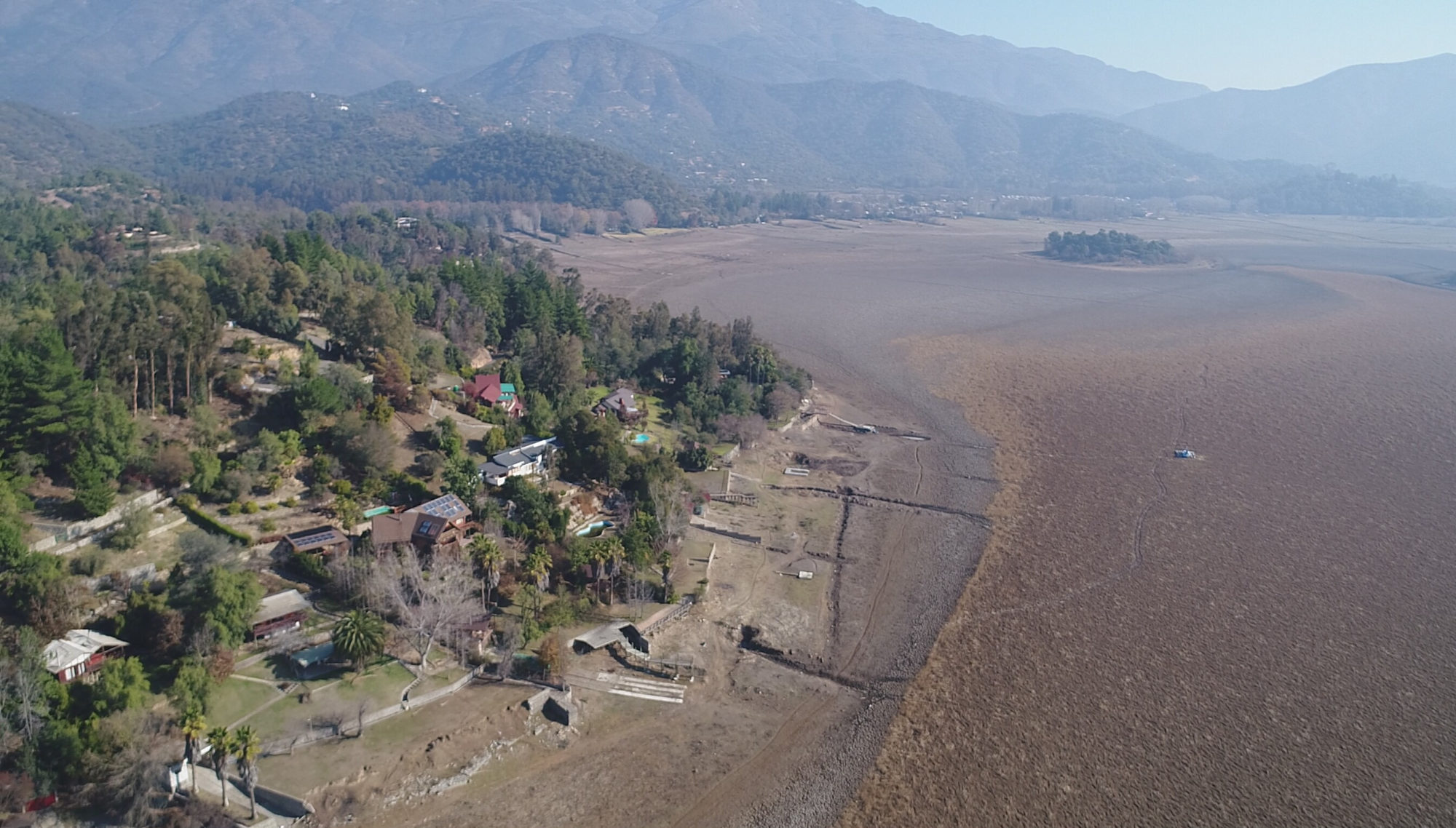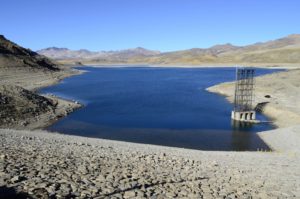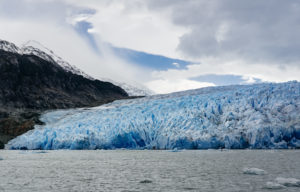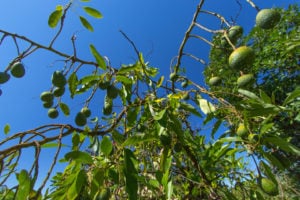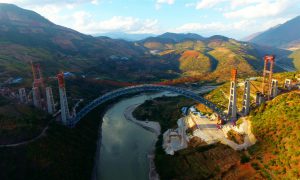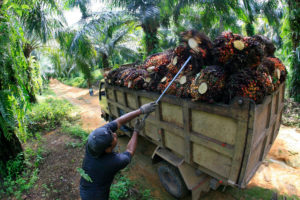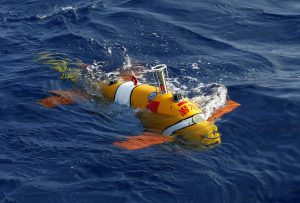For ten years now, central Chile has experienced a ‘mega-drought’. The phenomenon, the most severe in 60 years, has led to the creation of an agricultural emergency zone being declared that covers six of the country’s 16 regions.
76%
of Chile faces severe drought
The Metropolitan Region, where 40% of Chile’s population lives and which will host international climate change negotiations (known as COP25) in December, is one of the worst hit. Atacama and Coquimbo, in the north, the central region of Valparaíso, and O’Higgins and Maule in the south are also in a critical situation.
The Metropolitan region has a 70% rainfall deficit, according to local NGO Fundación Chile. Seventeen of its 52 communes face a water-related emergency.
In just five years, Chile’s drought has cut water availability by 37%. Reservoirs are 23% short of required volumes and the prognosis is bleak: Next season’s rainfall could be down by anywhere between 26% and 90% normal levels.
Emergency measures
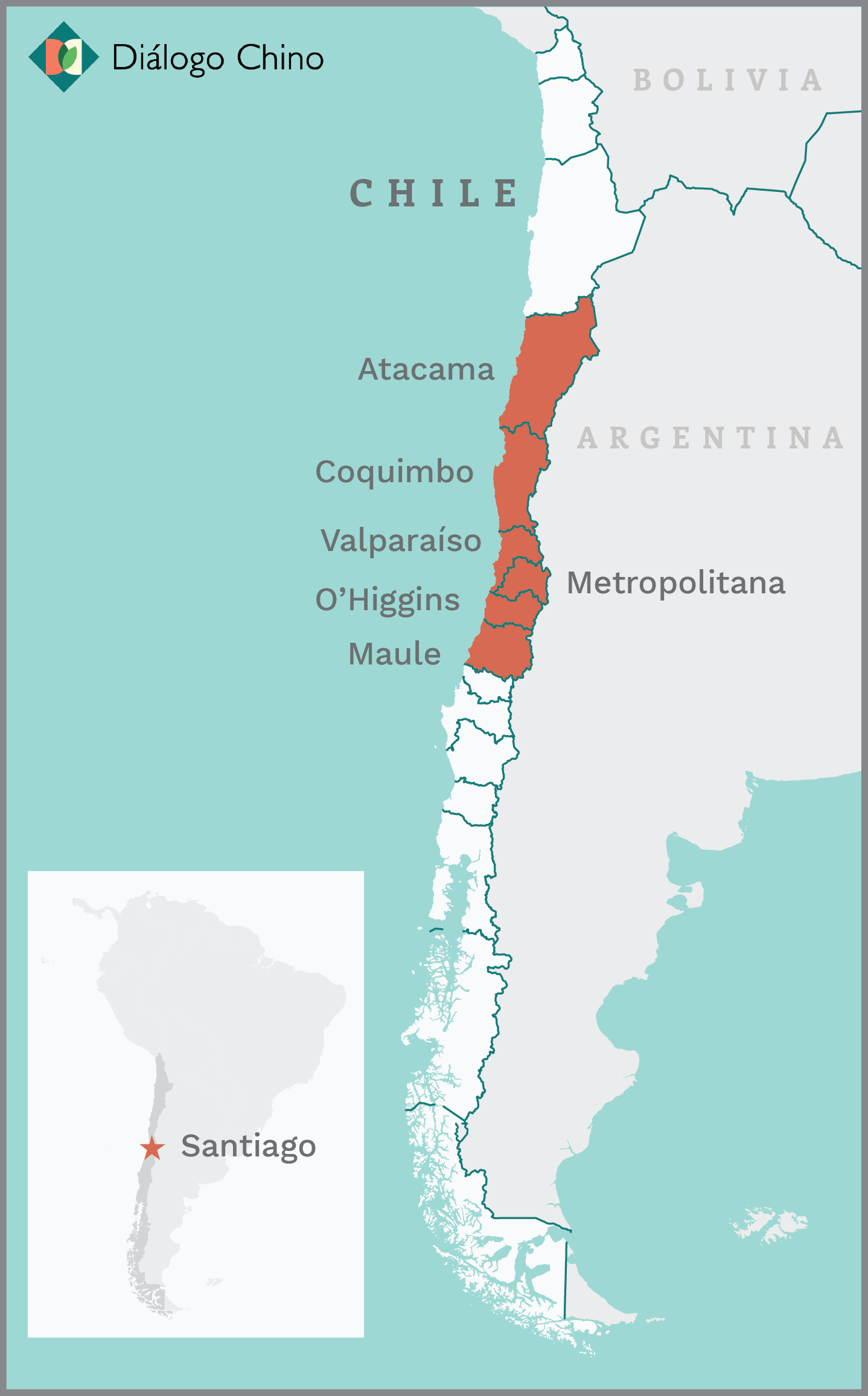
The government has allocated US$63 million for a series of measures, including the distribution of water in rural areas via trucks, lowering norias (hydropowered wheels that lift water into aqueducts), building wells, and improving irrigation, which today only reaches 40% of the country’s territory.
Water companies have committed investments of more than US$5 billion for infrastructure improvements. Poor pipes are responsible for the loss of almost 35% of urban drinking water.
In September, President Sebastián Piñera said drinking water in cities is guaranteed for this spring-summer season, but an overhaul of the system is required to ensure supplies for the future. The government is looking to the Netherlands, Israel and China, and to the World Bank, for water-related technology.
The agriculture industry is especially badly hit. At least 10,000 animals have died and another 50,000 animals are at risk, as are some 2,500 farmers’ livelihoods, according to the Agriculture ministry.
“In Chile water is mostly in the hands of private companies and they are the ones who have the rights to use it. It’s necessary to monitor that they are the ones actually using it and not other people,” says Oscar Cristi, director of the DGA, which uses drones and satellite images to spot irregularities, and telemetry to measure aquifer levels.
But Chile’s emergency drought measures must endure.
There are no magic solutions. There has to be water for recharging.
“Two-thirds of the drought we’re experiencing is down to natural weather changes and a third is due to the anthropogenic [man-made] component,” says Fabrice Lambert, a researcher at the Centre for Climate and Resilience Science. But the two factors are ever more closely related.
“By 2030, the climate of Chile’s central zone will deviate from its historical average. This will not be an abrupt change, we are already experiencing gradual modifications.”
Long term strategy
The government also plans to construct 26 new reservoirs at a cost of US$6 billion. However, historically construction of such projects has taken on average 25 years in Chile. That period could now be shorter, but whatever the timeframe, it’s clear they won’t mitigate the current emergency.
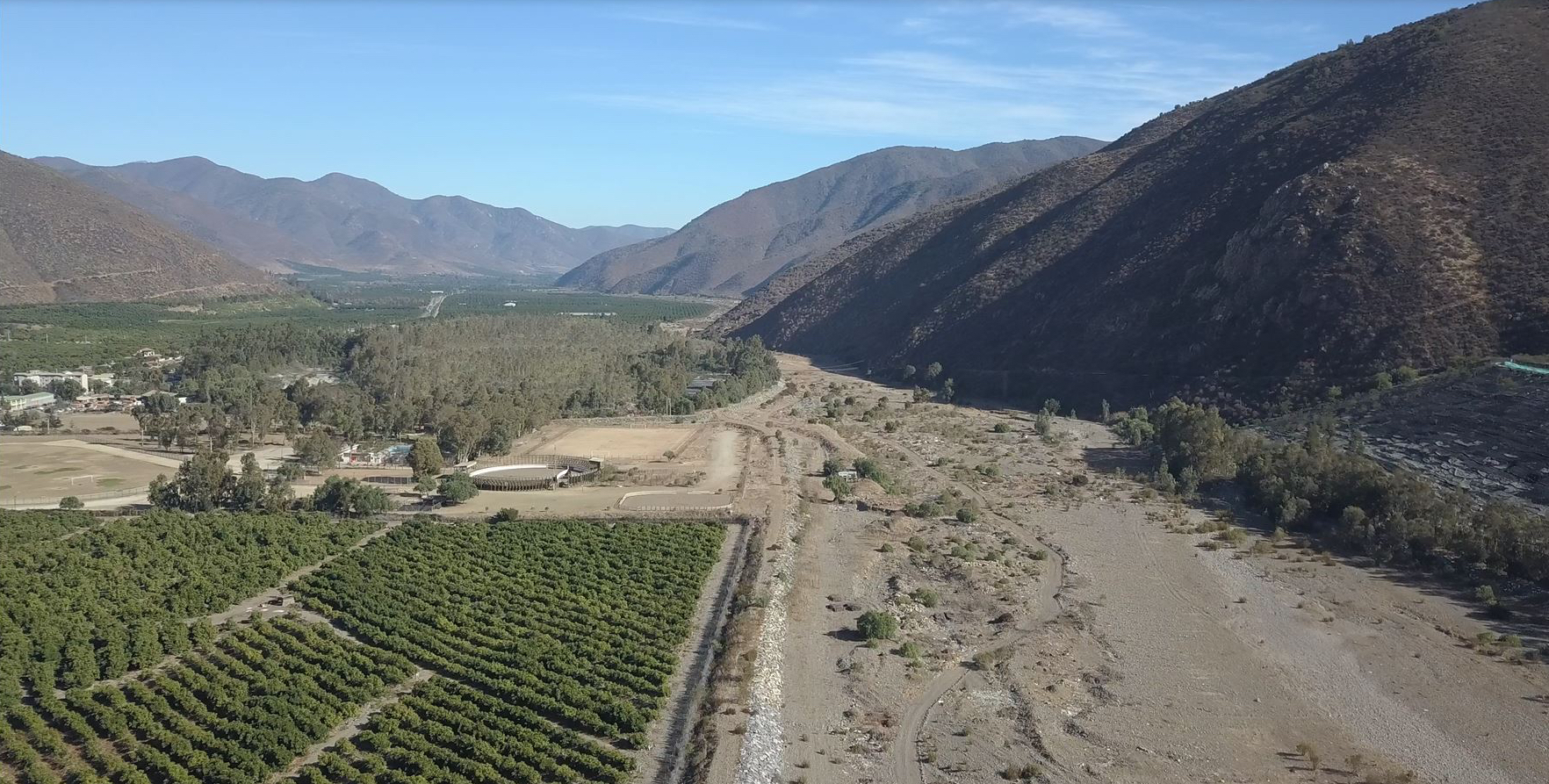
Private companies have also proposed building giant waterways or pipes of between 1,000 and 2,000 kilometres to transport water from southern basins to the northern regions.
Supporters say that about one million hectares could be irrigated by a waterway that could cost anywhere between US$10 and $30 billion and take ten years to complete.
However, it’s uncertain whether or not Chile’s southern basins have enough extra water. The government is said to be studying this.
Desalination plants, which are used for mining operations in the north of the country, are still too expensive.
Recharging aquifers, or deep draining – a process of replenishing groundwater via rivers – is a more affordable measure since it requires no new infrastructure.
“The construction of reservoirs or waterways requires a lot of infrastructure, so the fastest [method] is the recharge of aquifers, which only need two or three years to start operating,” says Edmundo Claro, director of research for Water and Territory at CSIRO Chile.
“Still, there are no magic solutions. There has to be water for recharging.”
Fernando’s story

Forty years ago, my father, who wasn’t a farmer, started growing walnuts. What began as a small venture, grew enough to take more seriously. Today, we have 42 hectares but we had to leave out 15% this year due to drought.
The [seed and shell of the] nuts need water to grow until December, then in January and February they need it to generate the actual fruit itself, but the water is going to run out at the end of the year. That’s why we severely cut back part of the trees – to concentrate the little resource we will have elsewhere. We do not know if this effort will bring results. We had droughts before, but they disappeared. Nothing like this.
For a while, forecasts said it wouldn’t rain in the winter that just ended. Nor in the spring that is beginning. But since hope is the last thing we lose, we delayed the decision to cut staff by 20% until a month ago. Even if it rains in the coming months the problem won’t be fixed. We have more resources … but small farmers can only wait for it to rain. We also have an irrigation infrastructure construction company with which we build water storage tanks, for a couple of days.
Since last January the demand has doubled. This is not going to end this year, but in the future there will be water. Not because of changes in the weather, but because of the infrastructure, if it is built. For this, Chile requires investment of between US$3 billion and $4 billion, which really isn’t that much.
